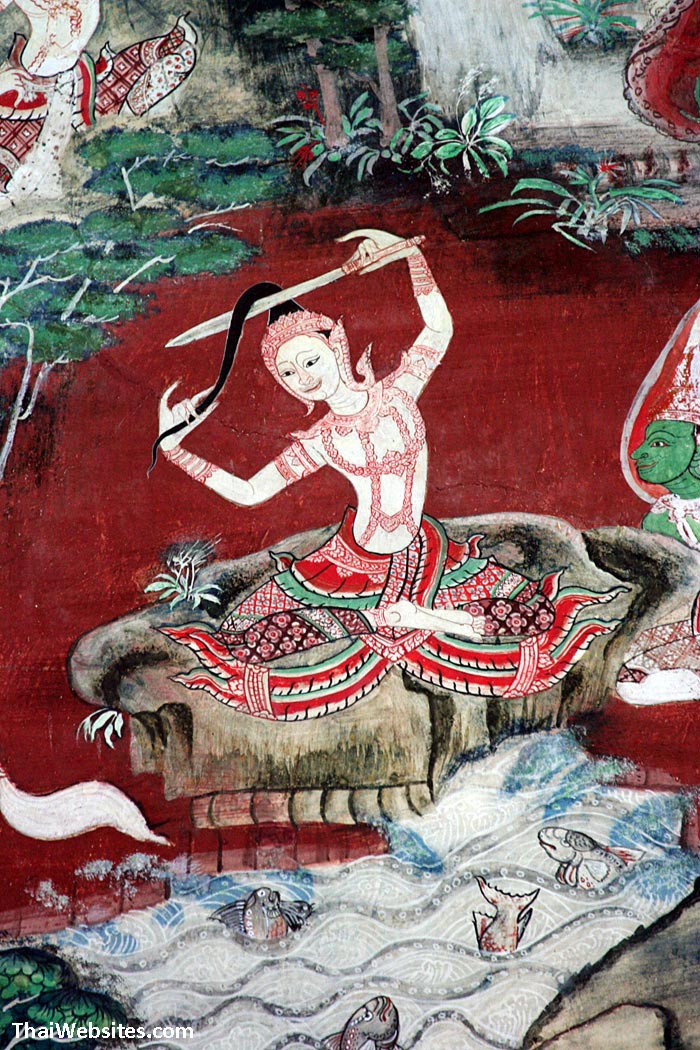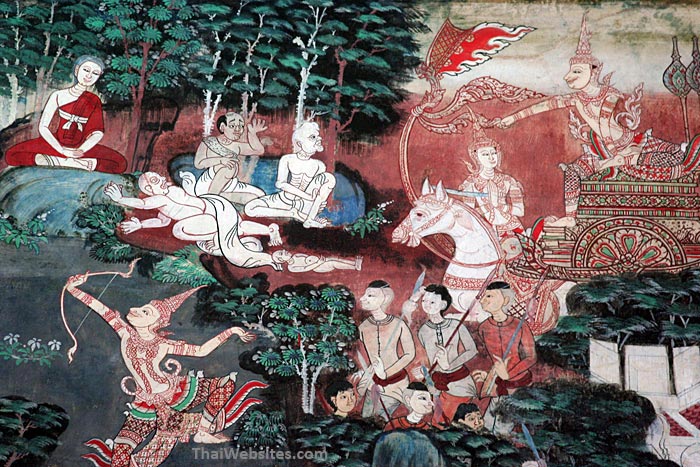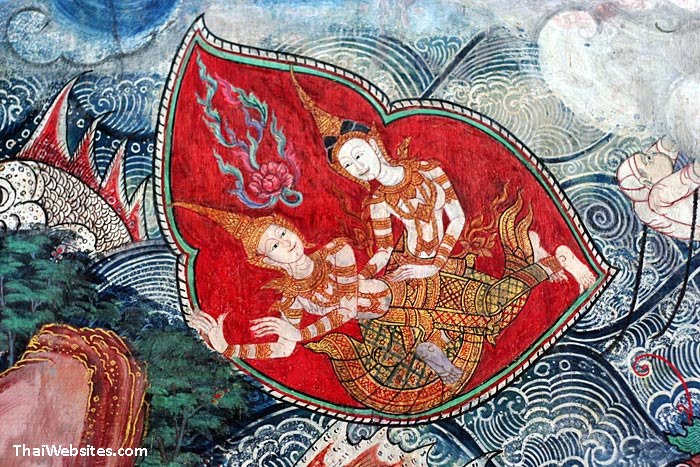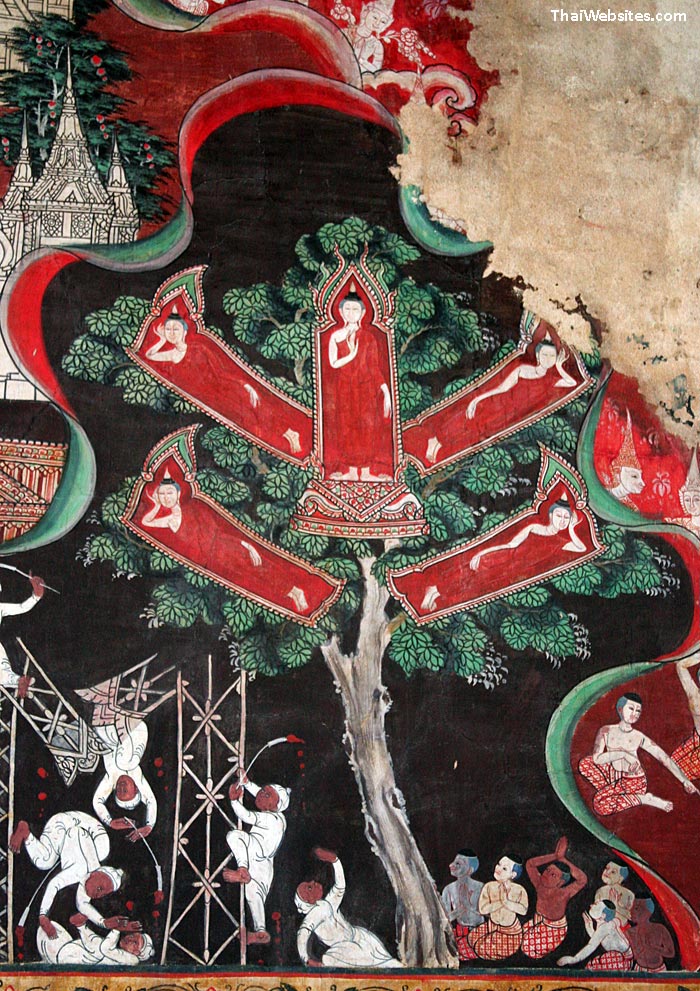Mural Temple Paintings - Wat Kongkaram, Ratchaburi

Scene from the Life of the Buddha.
The future Buddha cuts his hair, symbolising the act of Great Renunciation. From now on, the will live as a monk and go the the Path of Enlightenment.
Paintings offen decorate the inside of the walls in Thai temples. Often the life of the Buddha is portrayed. Also scenes from the previous lifes of the Buddha (the Jatakas, mainly the last ten incarnations) are seen. The scenes depicted on this page are from Wat Kongkaram in Ratchaburi province. On the lower parts of the walls, Jataka scenes are present, while the life of the Buddha is depicted higher up the walls.

Scene for the Life of the Buddha. Siddhartha, the future Buddha, on an outing from the palace, notices the Four Signs. He sees an old man, a sick man, a dead man and a monk. The scene shows the unescapable truth of human life : misery, suffering and death. The serenity of the Monk indicates the way to move forward, away from a worldly life, and towards the end of suffering, and the attainment of enlightenment.
Thai mural temple paintings are hightly stylistic. Also a lot of symbols are used. Basically the artists render certain scenes from the life of the Buddha and the Jatakas. While the details may differ, scenes are similar in different temples.
While lots of characters may confuse the meaning of the paintings, Thai Buddhists can recognize the different scenes by looking for key elements in the compositions. For example, the scene below (Mahajanaka Jataka) depicts the ocean with fish, and closeby (not shown) a shipwreck. This will identify the scene as part of Mahajanaka Jataka.

Mahajanaka Jataka. Prince Mahajanaka suffers a shipwreck. He struggles to keep alive swimming the ocean for 7 days untill the Gods came to rescue him. The scene symbolizes the virtue of Perseverance.
Wall paintings are certainly not everlasting. Due to the techniques employed (different from frescos) the walls are more easily damaged by the weather and deteriorate over time. Lower sections of wall paintings are most commonly affected, not just by human touch, but often by water seeping in from the ground below, making the paint peel off.
Therefore it is not common to observe really old (like a few centuries) mural paintings. Often temples that are better maintained will have images consisting of older sections, with new additions (restorations) in between.
Unfortunately, often mural painting are not well preserved either. It seems to be common practice at temple compounds to abandon old buildings and its contents, and to build new Ubosoths and other temple buildings. As a result, the old buildings are often much neglected. However, nowadays, some efforts are being made at certain sites, to preserve and restore the paintings.

Scene from the Life of the Buddha. The miracle at Shravasti. The Buddha was challenged by heretics in a competition. Taking on the challenge, the Buddha presented himself in multiple images, and won the competition, confounding the non-believers.
Wat Klongkharam is located in Photharam district, about 20 kilometer from Ratchaburi town. Probably the best way to visit is by private vehicle. However, it so happens that the train from Bangkok to Ratchbaburi passes through Photharam. So it may be worth checking out the train schedules at the main train station in Bangkok. Unfortunately, Wath Khongkharam is located about 3 kilometers north of the train station, so you will likely have to look for local transport (tuktuks and motorcycle taxis are available, probably a tuktuk is the better idea, negotiate fare in advance). Not sure about temporary arrangements during the Covid-19 pandemic, but the temple is only open during saturdays and sundays.
More Mural Paintings (images)
Mural Painting : Subduing Mara, Calling the Goddess of the Earth to Witness

